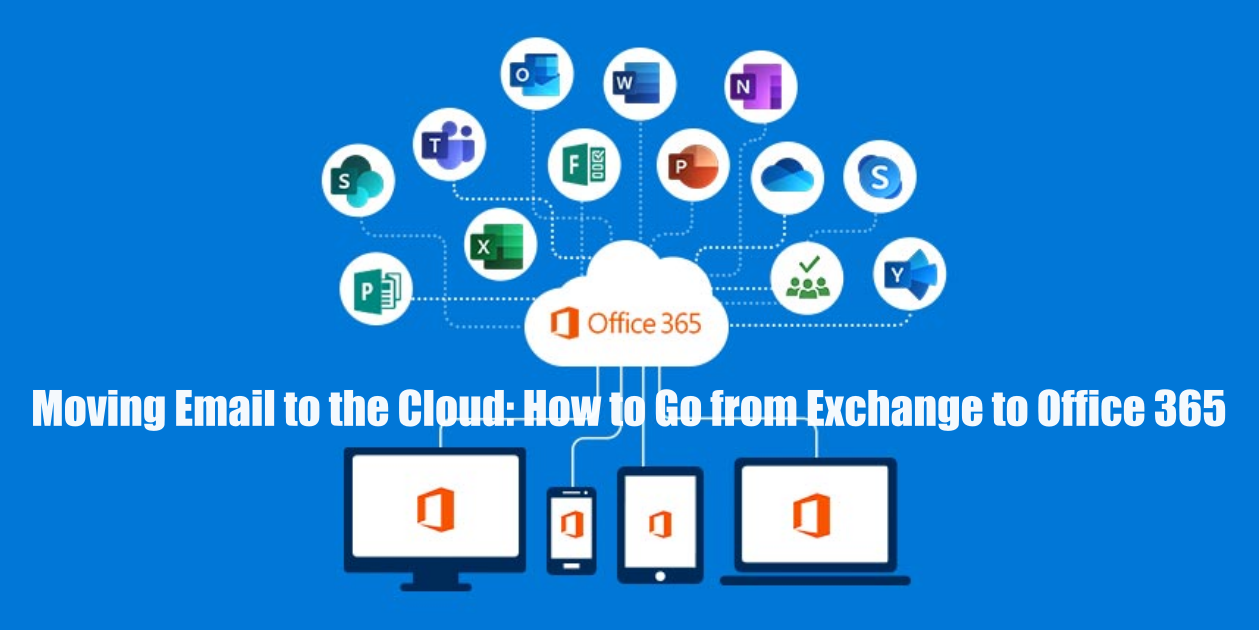Why Businesses Should Go from Traditional Exchange to Office 365
Many businesses have started to integrate remote work into their operations. Remote working has allowed employees many benefits, which have made them more productive and motivated during their working hours.
Even though remote working has made the jobs of each employee easier, it has made some things difficult when it comes to the operations of the overall organization. To make operations easier for both remote employees and those who work from the office, companies have tried to transition to cloud platforms – such as Dropbox, Microsoft Office, Google Drive, etc.
One platform that became the most important to transition to a cloud platform was emails. Migration to Office 365 became a priority for businesses to make adding and removing users easier, have flexibility during their operations, and have the ability to access an account from anywhere without fearing the security of their accounts.
Additionally, this migration has proven to reduce costs regarding the purchase of hardware since it is based on subscriptions from businesses and does not require any hardware devices to work. Knowing Office 365 migration steps for businesses that have started operating remotely is essential to prevent facing any obstacles during the transition. This article will provide organizations with the necessary steps to move their emails to the cloud and use them from anywhere.
Benefits of Transitioning Emails from Exchange to Office 365
Before knowing the transition steps, it is important that users understand the benefits that they will gain as an organization from the transition. As mentioned above, transitioning to Office 365 will allow companies to reduce their costs. On the other hand, by using Office 365, company employees will be able to communicate easily from within the platform and share their online calendars, with added security over their accounts that prevent third parties from accessing confidential data regarding the operations of a business or even employees.
Additionally, some companies who have started to use Office 365 have noticed that the productivity of their employees has increased since employees have the ability to move through different applications – such as Word, Excel, Teams, etc., in a single environment.
Steps to Move the Email to Cloud Office 365 Easily:
Generally, the steps to move email to cloud Office 365 are the same; there might be differences when businesses use different versions of Office 365 and their email platforms.
Nevertheless, here are the basic and easy steps that organizations can follow:
1- Understand How the Business Email Environment Works
Understanding how the original business email environment works is a crucial part of ensuring a secure transition to Office 365. Thus, ensure to know how many emails each company receives and sends on average to understand how much storage is needed for Office 365.
Additionally, some businesses use extensions and other email features – such as extensions that notify users when their emails have been opened from the receiving end.
2- Choose the Best Moving Method
There are different methods of email migration; for example, cutover migration batch, staged migration batch, and hybrid migration. Each method has different completion steps; however, each method is designed for a specific type of organization.
So, when understanding the background of an organization’s email environment, organizations will be able to choose the fitted method for them.
3- Setup the Office 365 Environment
Now that the method is chosen, companies can set up their Office 365 environments and start the transition process.
In addition to setting up an Office 365 environment, companies need to understand how much of their budget they are willing to invest in the migration process and choose how much storage is needed for their company.
4- Create Employee Accounts in Office 365
Each employee should get access to create an Office 365 account using the company’s domain account. After having access, employees should create their accounts and wait for the transition of their emails to their new accounts.
On the other hand, the transition can stir up some technical confusion for some employees – for that; organizations need to conduct training sessions and introduce the basics of the new environment.
5- Change the Email Environment
Now that the most necessary steps are completed and companies have chosen the most fitted migration method for their environments, those in charge of the migration will have to implement the transition methods. This step may require managers to provide permissions for these transitions as emails are considered confidential and require permissions for movement.
6- Give Access to Office 365 Environment to Receive Emails
After all company emails have been moved to Office 365’s environment, managers need to give additional permission to Office 365 to receive new emails that employees will receive after the transition.
This step can be considered one of the most important steps since some companies do not think about this step and miss getting important emails.
Conclusion
To conclude, migration from Exchange to Office 365 provides numerous advantages to remote workers and allows them to become more productive and efficient while working from anywhere.


